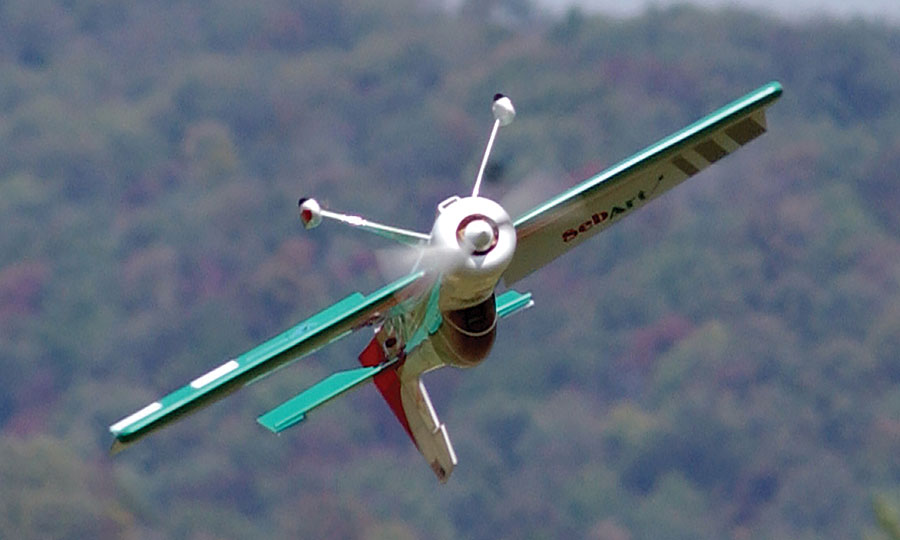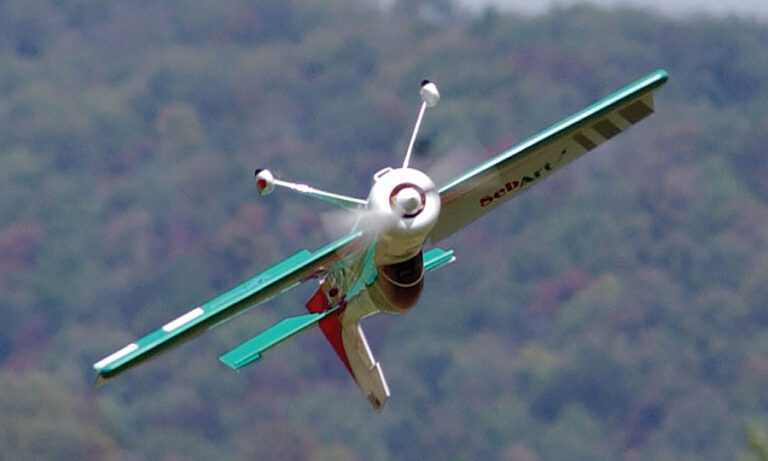If you want to become the best aerobatic pilot possible, you need to master key maneuvers by taking small steps. First, make sure you’re proficient in performing maneuvers like inverted flight, vertical and horizontal rolls, inside and outside loops and stall turns. You can then perform these moves in sequences to create show-stopping routines. In this post, I’ll highlight a precision maneuver called the Figure-M, which incorporates two stall turns with a little twist. Without further hesitation, let’s get started!
Before we Begin
Before you attempt your first Figure-M, it’s important that you’re able to perform vertical rolls, the stall turn and an outside loop. This maneuver combines elements of all three of these maneuvers, and pilot proficiency is a must for success. For the most part, precision aerobatic airplanes, which are often referred to as pattern or F3A-style airplanes, are required to perform a maneuver like the Figure-M. We have all heard the expression that you need the right tool for the right job. Similarly, not only do you need an aerobatic model to perform this maneuver, but you also need the proper mechanical and programming setup for your aircraft.
To simplify this, I always recommend the use of a flight mode (all dual or triple rates for all control surfaces are on one switch). In the low rate condition of this flight mode, start with low rate aileron and elevator values of about 20 degrees of deflection on the aileron control surface with 35% exponential (expo) and 12 degrees of elevator deflection with 35% expo. You should then use maximum deflection on the rudder with about 65% expo. There is no need for a high rate configuration to properly execute the Figure-M maneuver.
Also note that these recommended expo values should only serve as an example. They can be considered as a starting point, and you can increase or decrease the expo values and/or dual rate values to suit your style of flying. Any RC pilot can benefit greatly from using expo as it softens the aircraft’s control/response feel around the center stick position. By doing so, it’s easier for you to perform any given maneuver with the utmost precision.
Overview
Let’s perform this maneuver with 3⁄4 rolls in the same direction (to the left) on all vertical segments. When performing any precision maneuver, flying smoothly is essential, and all your roll rates should be the same throughout this maneuver. As a side note, the Figure-M is a “centered maneuver” and the model should be inverted and 50% complete with a 1/2 outside loop right when the model approaches the pilot’s center. Now, to make the maneuver a bit easier to understand, let’s break the Figure-M into four basic steps.
By the Numbers
One
First establish a flight path that’s parallel to the runway and add full power. Then, before the model comes to the aerobatic center (where you’re standing), pull to a vertical up-line. Perform a brief line segment (about two seconds long) and perform a 3⁄4 roll to the left. Then, perform another line segment that’s equal to the first line segment. Pull the throttle back and perform a stall turn by applying full-rudder deflection. Release rudder input after the model pivots 180 degrees to establish a vertical down-line.
Two
Now perform another line segment that is equal in length to the previous two and then perform a 3/4 roll to the left. After the roll, perform another line segment of equal length and perform a 1/2 outside loop while increasing power to establish a vertical up line. As I mentioned earlier, the model should be inverted and the maneuver 50% complete as the airplane is directly in front of you.
Three
After you have performed the 1/2 outside loop and the model is tracking on a vertical up line, execute another line segment of equal length. Then, perform another 3⁄4 roll to the left. After the roll, perform another line segment of equal length and gradually pull the throttle back to perform another stall turn. Just before the model stops traveling upward, apply full rudder deflection and let the model pivot 180 degrees to enter another vertical down line. Usually, the model will pivot more easily in one direction (mostly into the wind). Pivot the model so it will perform a stall turn and not just flop over the top.
Note that in competition aerobatics, if the stall turns aren’t executed properly throughout the maneuver and the model flops over the tops, a final score of a zero is given to the pilot!
Four
After the vertical down line has been established, perform another line segment of equal length, another 3/4 roll to the left, and the final line segment that is still equal in length to the previous line segments. Lastly, perform a 1/4 inside loop to a horizontal upright exit while increasing power so that the model remains at a constant flight speed.
When complete, make a 180-degree turn and give this maneuver another try! Remember, practice makes perfect, especially for complex maneuvers like this one. After you’ve learned the fundamentals of performing the Figure-M maneuver with 3/4 rolls, you can fine tune your timing and control inputs. Aside from knowing how to perform this impressive aerobatic move, be sure to also spend some time to properly set up your aircraft to minimize any unwanted control corrections. You want to perform this and any other aerobatic maneuver smoothly with a minimum of deviations.
For example, if your airplane is a bit too sensitive while pushing on the 1/2 outside loop, try decreasing the elevator throw on that dual- or triple-rate setting and/or try adding a touch more exponential as needed. As time goes on, you’ll learn that behind every great aerobatic pilot is a well-trimmed and properly set-up aircraft. Until next time, patience is a virtue. Fly safely and always remember to have fun!

To be successful, choose the proper aircraft. A pattern or F3A-style airplane is required to perform a maneuver like the Figure-M.
By John Glezellis | Illustration by FX Models

